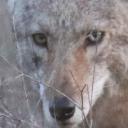Yahoo Answers is shutting down on May 4th, 2021 (Eastern Time) and beginning April 20th, 2021 (Eastern Time) the Yahoo Answers website will be in read-only mode. There will be no changes to other Yahoo properties or services, or your Yahoo account. You can find more information about the Yahoo Answers shutdown and how to download your data on this help page.
Trending News
6 Answers
- 5 years agoFavorite Answer
Giant ground sloths were formidable in size. You could compare them to elephants:
They are big.
They eat a lot.
They only have one main enemy.
Giant ground were actually pretty fast. They were also fast when it came to fighting. Their one main enemy is the short-faced bear. This bear was only slightly smaller than these sloths. In order to defend themselves against these bears they needed to be fast. Luckily for them these bears stick to scavenging, and only hunt occasionally.
The reason they evolved to be so slow now is, because of the ice age. Since their main was trees, and there weren't many trees, the sloths became slow and small to save energy. The mammoths evolved another way to survive which was to migrate. Their main food (grass, and other low-growing plants) was always present just in different places. Now sloths still take the advantage of saving energy. The mammoths unfortunately died after the ice age ended.
- Cal KingLv 75 years ago
Large animals are unlikely to be fast, because it takes a lot of muscles to move a heavy animal, and the additional muscle adds weight, so that more muscles are needed. Adding more muscle will increase weight and even more muscles are needed. Therefore, if speed is the ultimate goal, then an animal can only be a certain size but no larger. The same basic principle is found in automobile design. For example, if you take a car with a 4 cylinder engine and substitute it with a heavier 6 cylinder engine that generates more power, then that extra power simply goes to moving the extra weight, and you end up with a car that is about the same in speed, despite having more horsepower. The horse is more muscular than a cheetah, but the extra muscle simply goes to moving the extra weight, and therefore the horse is slower than the cheetah despite having more muscle. In fact, antelopes, which are the cheetah's prey, are faster despite having less muscle, because of their lighter weight. Similarly racing cars such as Formula 1 and Indy cars are a lot lighter than street cars to achieve maximum speed.
That of course does not mean that the giant ground sloth is slower than the living sloth. that is because the extant sloths, unlike the giant ground sloth, have predators such as the Harpy eagle. Since the eagle has excellent eyesight, it can spot a moving sloth from a long distance away. To avoid detection, the sloth has evolved to move slowly and deliberately, so that they look like branches and leaves slowly swaying in the wind, instead of a yummy target for the eagles. As a result, the sloths are slow, probably slower than the giant ground sloth, which does not have to depend on slow movements to avoid detection, since the only animals capable of preying on it are large cats like the saber-toothed cat and the American subspecies of the African lion. Cats rely more on hearing and smell than eyesight to hunt.
- bravozuluLv 75 years ago
Today's sloths eat a diet that is very toxic and very rough. The bacteria in the gut need a lot of time to break it down. That limits the amount of energy they can use. Moving slow also helps them stay unobserved. They need to move slow because of their diet. That wouldn't likely apply to giant sloths. Also they were much larger and that allowed them to get more out of their food.
I just watched a BBC show The Emerald Band, Secrets of a Living Planet.
- JimZLv 75 years ago
No. It appears they were more athletic and actually pretty formidable.
Interestingly modern sloths presumably evolved their slow movements presumably to make them less visible to their potential enemies.
https://en.wikipedia.org/wiki/Megatherium
"While it has been suggested that the giant sloth may have been partly carnivorous, this is a controversial claim. Richard Fariña and Ernesto Blanco of the Universidad de la República in Montevideo have analysed a fossil skeleton of M. americanum and discovered that its olecranon - the part of the elbow to which the triceps muscle attaches - was very short. This adaptation is found in carnivores and optimises speed rather than strength."
- How do you think about the answers? You can sign in to vote the answer.
- ?Lv 75 years ago
Probably not. They would have had to eat a lot more food because of their size so they would probably be a lot more active






